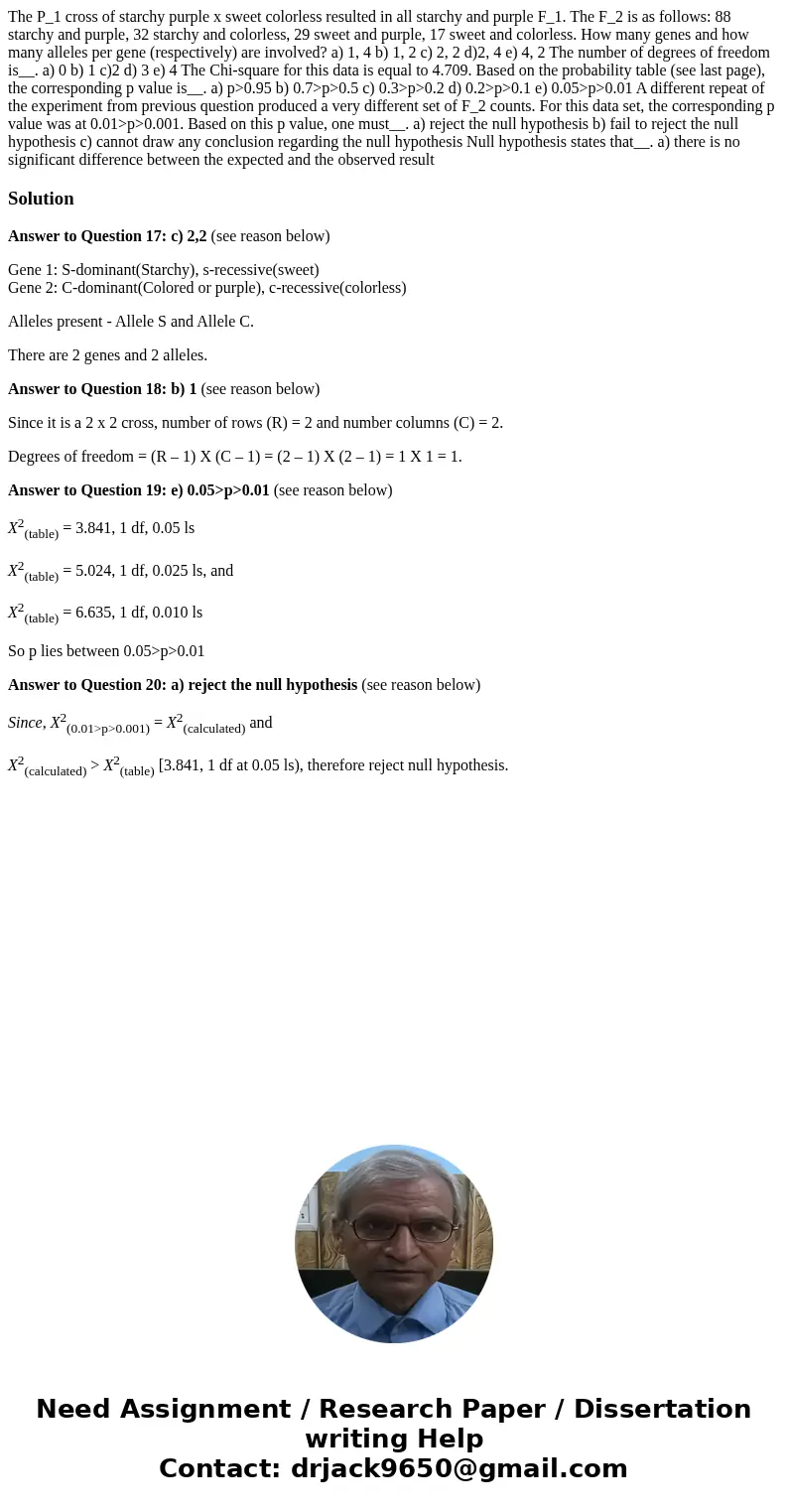The P_1 cross of starchy purple x sweet colorless resulted in all starchy and purple F_1. The F_2 is as follows: 88 starchy and purple, 32 starchy and colorless, 29 sweet and purple, 17 sweet and colorless. How many genes and how many alleles per gene (respectively) are involved? a) 1, 4 b) 1, 2 c) 2, 2 d)2, 4 e) 4, 2 The number of degrees of freedom is__. a) 0 b) 1 c)2 d) 3 e) 4 The Chi-square for this data is equal to 4.709. Based on the probability table (see last page), the corresponding p value is__. a) p>0.95 b) 0.7>p>0.5 c) 0.3>p>0.2 d) 0.2>p>0.1 e) 0.05>p>0.01 A different repeat of the experiment from previous question produced a very different set of F_2 counts. For this data set, the corresponding p value was at 0.01>p>0.001. Based on this p value, one must__. a) reject the null hypothesis b) fail to reject the null hypothesis c) cannot draw any conclusion regarding the null hypothesis Null hypothesis states that__. a) there is no significant difference between the expected and the observed result
Answer to Question 17: c) 2,2 (see reason below)
Gene 1: S-dominant(Starchy), s-recessive(sweet)
Gene 2: C-dominant(Colored or purple), c-recessive(colorless)
Alleles present - Allele S and Allele C.
There are 2 genes and 2 alleles.
Answer to Question 18: b) 1 (see reason below)
Since it is a 2 x 2 cross, number of rows (R) = 2 and number columns (C) = 2.
Degrees of freedom = (R – 1) X (C – 1) = (2 – 1) X (2 – 1) = 1 X 1 = 1.
Answer to Question 19: e) 0.05>p>0.01 (see reason below)
X2(table) = 3.841, 1 df, 0.05 ls
X2(table) = 5.024, 1 df, 0.025 ls, and
X2(table) = 6.635, 1 df, 0.010 ls
So p lies between 0.05>p>0.01
Answer to Question 20: a) reject the null hypothesis (see reason below)
Since, X2(0.01>p>0.001) = X2(calculated) and
X2(calculated) > X2(table) [3.841, 1 df at 0.05 ls), therefore reject null hypothesis.

 Homework Sourse
Homework Sourse